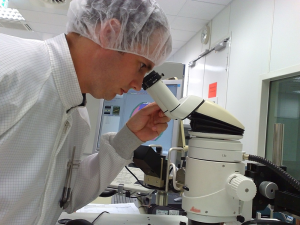In The News: ‘ready-to-go’ Battery Electrode with Glass-Ceramic
A Kansas State University engineer has invented a ‘ready-to-go’ battery electrode with glass-ceramic parts. This new electrode will hopefully improve space exploration tools and unmanned aerial vehicles.
The new battery electrode is over 10 percent lighter than others, nearly 100 percent cycling efficiency for over 1000 charge cycles, is made of low-cost materials and can function in temperatures of negative 15 degrees Celsius.
The research team lead by engineer Gurpreet Singh has been looking into new material combinations for batteries and electrode design. They are now manufacturing a self-supporting and ready-to-go electrode that consists of a glassy ceramic called silicon oxycarbide sandwiched between large platelets of chemically modified graphene, or CMG. The electrode has a high capacity of approximately 600 miliampere-hours per gram — 400 miliampere-hours per cubic centimeter — that is derived from silicon oxycarbide. The paperlike design is made of 20 percent chemically modified graphene platelets.
Singh’s next goal is to produce this electrode material in greater dimensions. “Ultimately, we would like to work with [the] industry to explore production of lithium-ion battery full-cells,” he said.
To read the full article from Kansas State, click here.

Leave a Comment